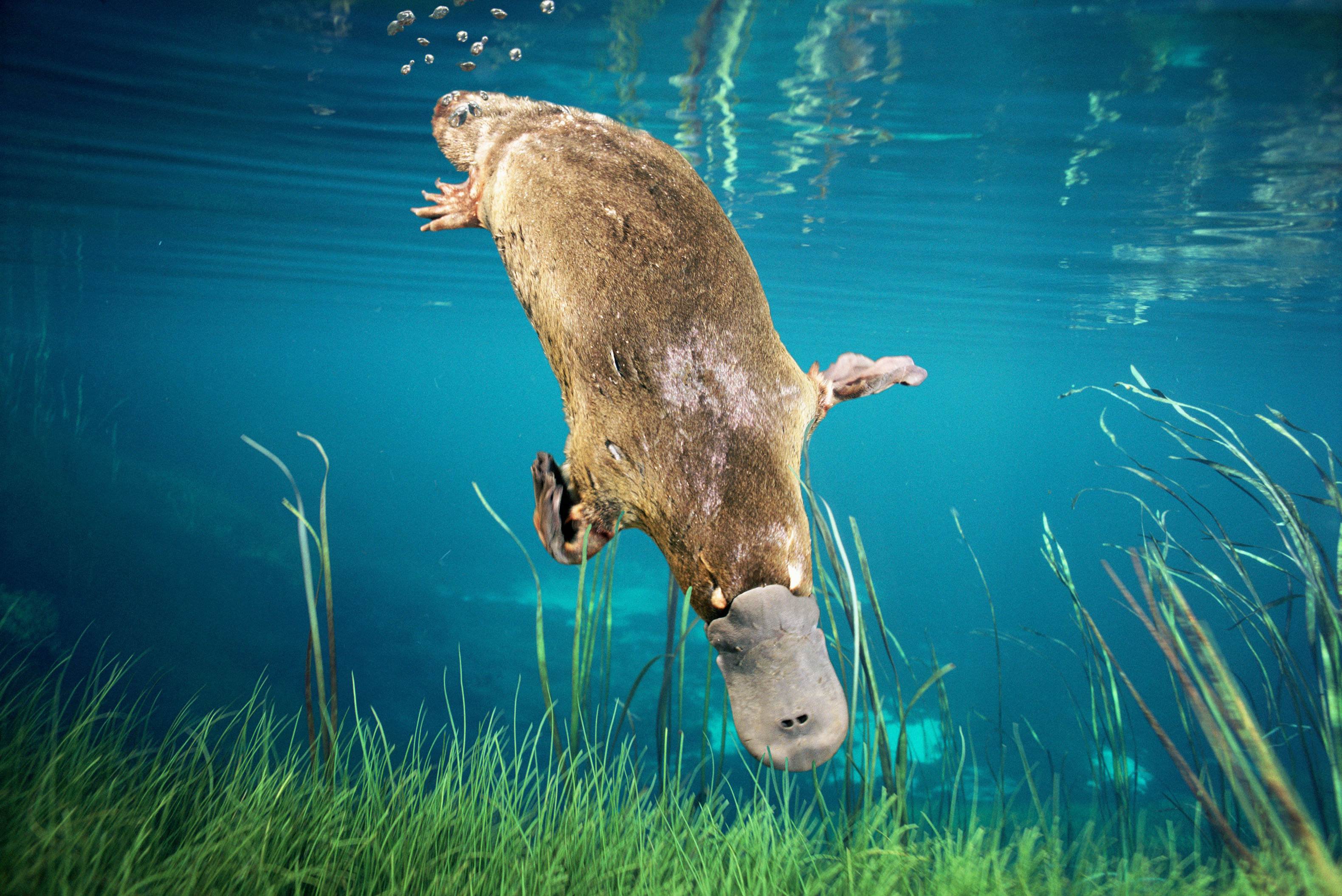Platypus, << PLAT uh puhs, >> is an unusual Australian mammal that lays eggs and has a bill like a duck. For this reason, they are often called duckbills. Along with echidnas , platypuses are the only surviving monotremes, a group of mammals that lays eggs like birds and reptiles. However, monotremes have hair and feed their young on the mother’s milk like other mammals.

The platypus lives near rivers and streams in eastern Australia . It has webbed feet and a broad, flat tail that aids in swimming. It also has thick, brown fur to keep it warm. Platypuses usually dive underwater for 18 to 40 seconds at a time, and spend about 10 seconds on the surface between dives. They search for worms, shellfish, and crustaceans (hard-shelled animals with segmented bodies and jointed legs) from the bottom of streams using their bill. The platypus keeps its eyes closed underwater but has special sensors on its bill that can detect small electric currents produced by its prey. Adult platypuses lack teeth. They crush their food with horny pads at the back of the jaws. Platypuses may be 16 to 22 inches (41 to 56 centimeters) long as adults and weigh about 5 pounds (2.3 kilograms). Platypuses from warm northern areas are smaller than those from cooler southern regions.
The platypus has claws on its front and hind feet and can walk on land or dig in the ground as well as swim. Male platypuses have a hollow clawlike spur on each ankle connected to glands filled with venom (poison). Male platypuses can use the spurs for defense or for fighting with other males.
Platypuses live in burrows that they dig in the banks of streams. The burrows may be as long as 85 feet (26 meters). The female platypus builds a nest of leaves and grass at the end of her burrow and blocks the entrances with dirt before laying her eggs. Unlike most mammals, the platypus has a cloaca, a digestive and reproductive organ common in reptiles and birds. The female platypus lays from one to three eggs through the cloaca. The eggs measure about 1/2 inch (1.3 centimeters) in diameter and have a leathery shell. Platypus eggs hatch after about 10 days. A young platypus remains in its mother’s burrow for about four months and feeds on its mother’s milk.
Platypuses were once hunted for their fur. Today, they are protected by law throughout their range. They are sometimes accidentally caught in crustacean traps and fish nets and drown. Platypuses are declining in number due to human activities that affect the streams and rivers where they live. Protecting these water sources ensures that platypuses have suitable habitats in which to live.
